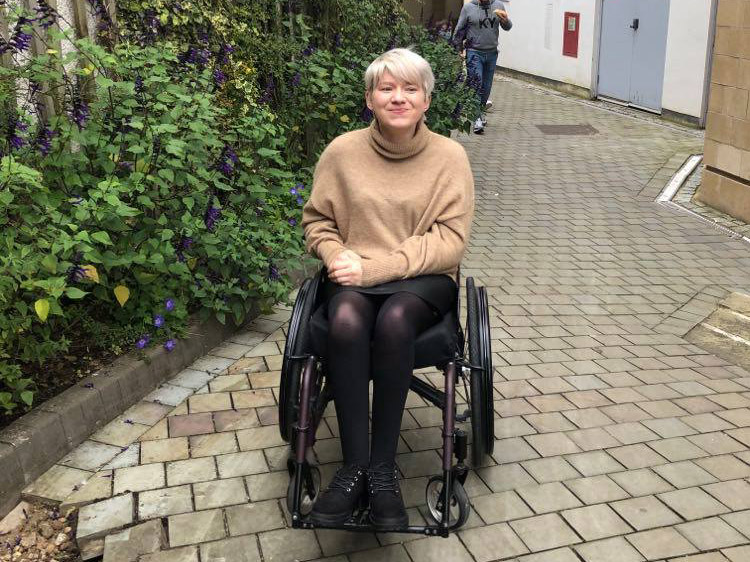Imagine having to go a mile out of your way to access public transport.
Imagine being unable to use the street next to your house because it’s in such a state of disrepair that it was unsafe.
Or imagine that you were in a wheelchair, and there was a pavement with a dropped curb on one side, but inexplicably, not on the other.
How would you navigate these surroundings? For me, these are everyday experiences, and this is a commonplace question.

Greenpeace local media volunteer Melissa Parker out and about in Manchester. Our unfair transport system forces disabled people to deal with all kinds of barriers on even the most simple journeys. Melissa Parker
Whenever I plan a journey, I have to consider every stop or street, will there be a dropped curb? And if there is, will there be a car on the pavement blocking it?
I am not alone in this. All over the UK, disabled people are limited in their social lives, their choice of work, and access to education and healthcare – all because of our transport system.
Disabled people are taught to adapt to the world around them. It should be the other way around.
These experiences and questions occur so regularly that I had overlooked that there was a problem. Disabled people are taught that they should adapt to their environment; they should accept it. We are trained to consider all of these potential barriers because no one else will.
I was asked once whether I disliked being disabled. I said no, I do not. I simply wish that the world around me would adapt and improve. People with disabilities are overwhelmed with the message that the world was not built for us, and we are taught to be grateful for each adaptation. We would rather just be ourselves, and we wish we could expect to be treated with humanity.
Our current transport system treats disabled people as an inconvenience.
Many disabled people cannot drive, but trains, buses, and other options can often be impractical to use.
Disabled public transport users report inaccessible services, poor customer service, including abuse and comments about the inconvenience of making accommodations, negative attitudes from drivers, and a lack of up-to-date information. The situation has worsened recently, as people with hidden disabilities are condemned for being unable to wear a mask. Such incidents have become normalised within our society and internalised by disabled people.
But it was not until we all collectively began to do everything Zoom that I truly realised how difficult public transport made our lives. There was no daily commute on a train where I would be hit by baggage as I was placed in the luggage compartment, or negative words from a bus driver who did not want to lower the ramp manually.
Public transport is difficult for everyone, but I wish that disabled people only had to contend with the comparatively mundane obstacles.
Helping the environment and people with disabilities
That’s why the Greenpeace campaign for green transport so inspired me. There is an essential link between green transportation and the need for better accessibility for people with disabilities. Improving public transport can and should benefit both the environment and people with disabilities.
The government says its ambition is for disabled people to have the same access to transport as everyone else by 2030.
However, as many environmental campaigners know, the government’s commitments can’t always be trusted. To make progress, we need to see the enforcement of passenger rights. For example:
- Improved training to help transport staff understand the needs of disabled people and provide more help.
- Transport operators providing travel information in formats that all passengers can readily access and understand, before and during a journey.
There should also be more emphasis on improving infrastructure: ensuring that the whole transport system is designed and run so it’s effortless to use for all. Technological advances should provide opportunities for all, and disabled people should be involved from the start in their design.
For the next generation, using public transport shouldn’t be a battle
Greenpeace will continue to demonstrate that environmental justice can make things better for everyone.
I hope we can create green and inclusive transport, so future generations do not have to experience the same physical and attitudinal barriers those with disabilities experience today.
I hope to see a world where future disabled children do not have to learn to adapt to their environment and that they do not have to ask themselves the questions that I have been conditioned to ask as a necessity.



